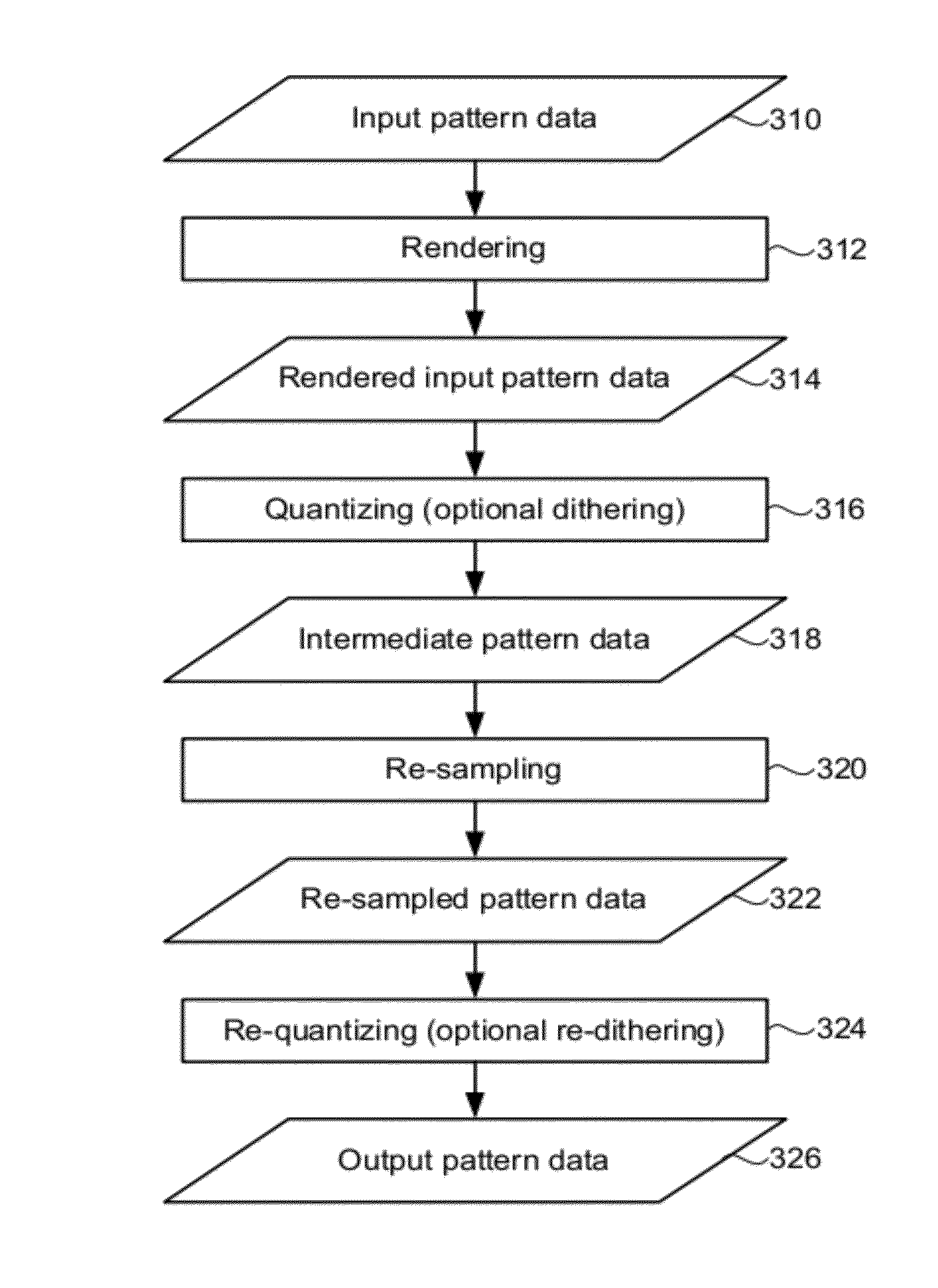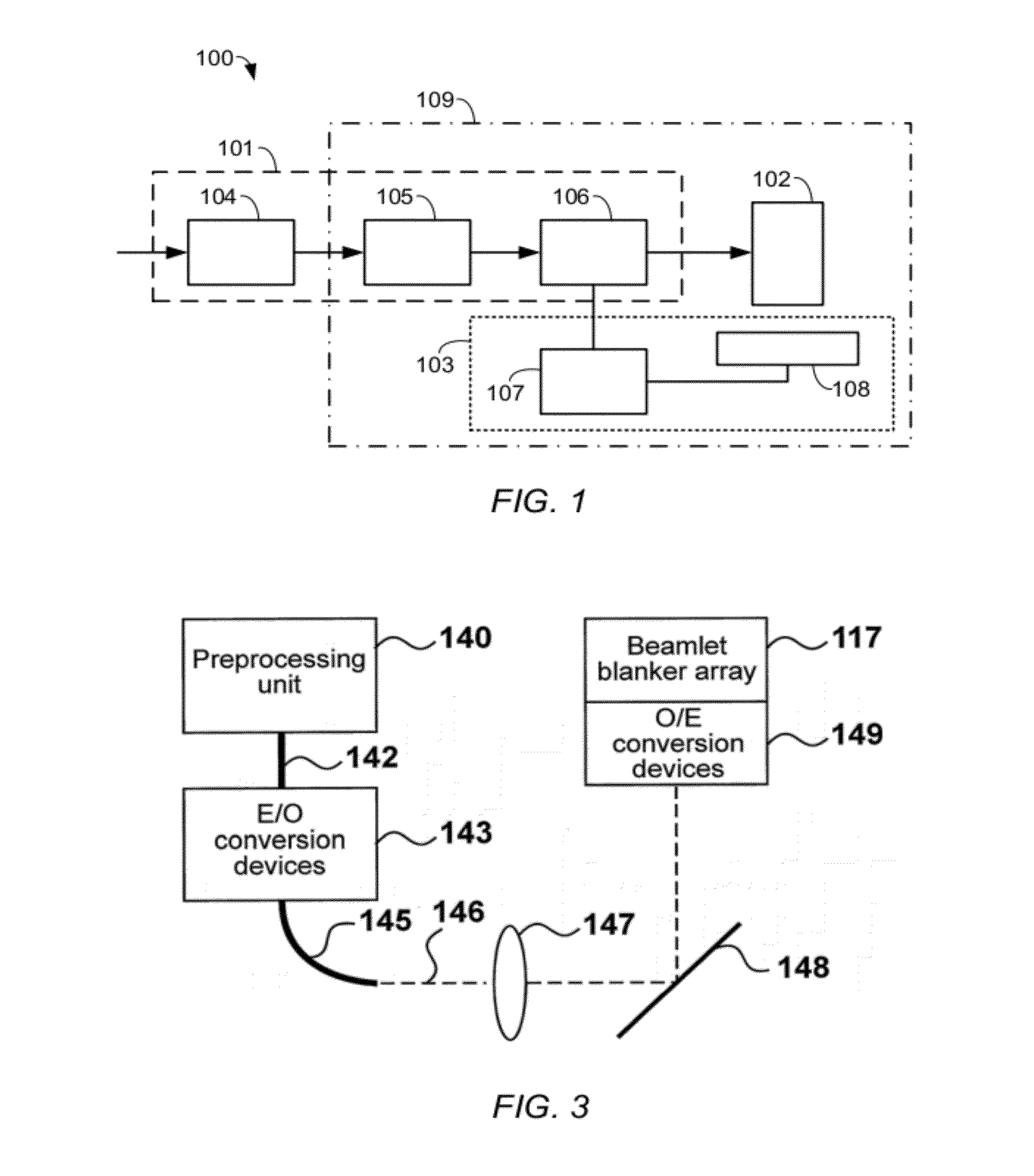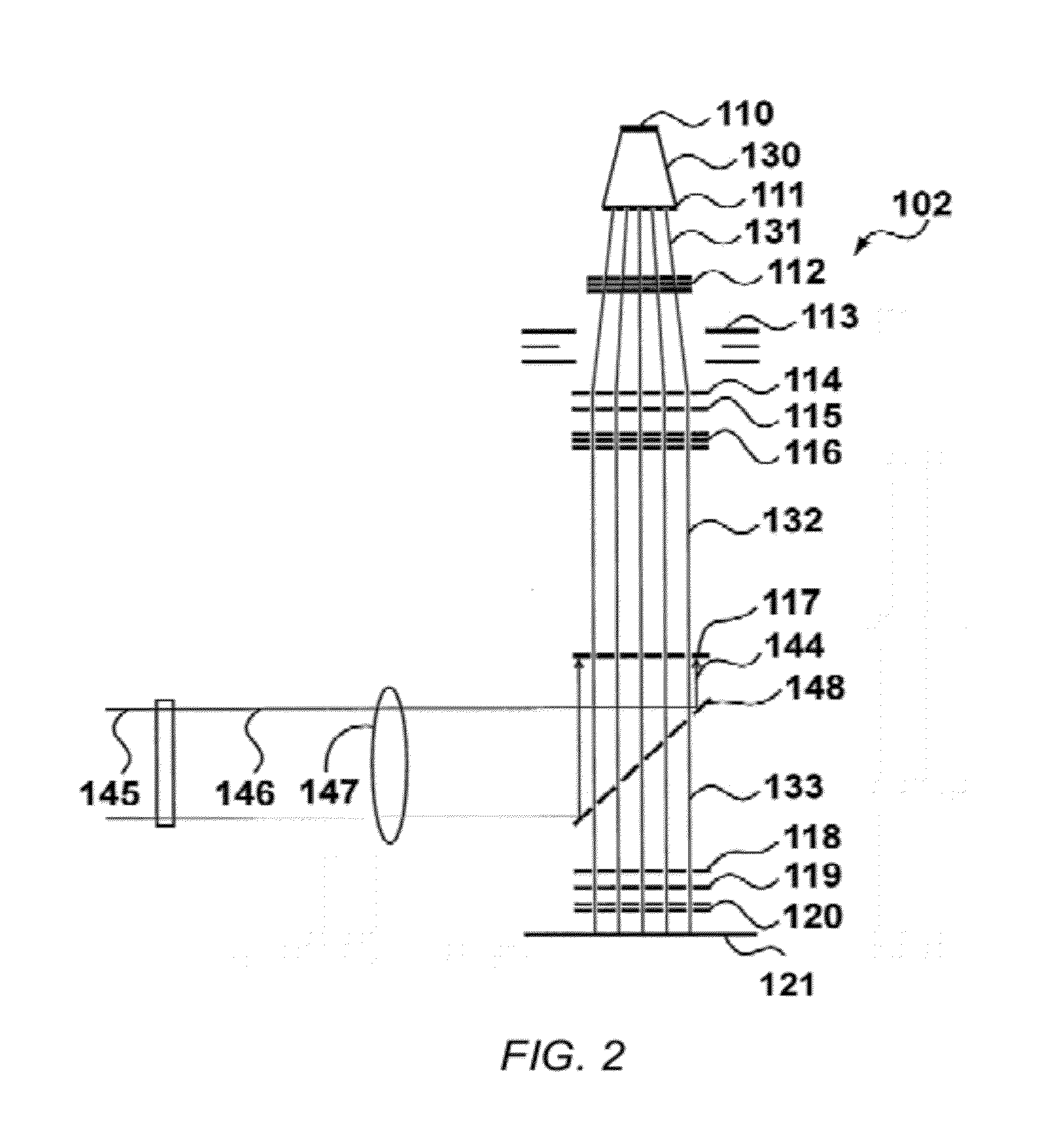Pattern data conversion for lithography system
a lithography system and pattern data technology, applied in image data processing, radiation therapy, nanotechnology, etc., can solve the problems of large amount of pattern data required to enable the scanning process, significant drawback, and inability to determine the actual memory requirement to store pattern data in advance, so as to improve performance, and reduce the effect of performan
- Summary
- Abstract
- Description
- Claims
- Application Information
AI Technical Summary
Benefits of technology
Problems solved by technology
Method used
Image
Examples
Embodiment Construction
[0046]The following is a description of various embodiments of the invention, given by way of example only and with reference to the drawings.
Charged Particle Lithography System
[0047]FIG. 1 is a conceptual diagram showing a maskless lithography system 100 divided into three high level sub-systems: a data path 101, a lithography machine column 102, and wafer positioning system 103. The lithography machine column 102 generates optical or charged particle beams for exposing a wafer according a pattern data provided by the data path. The wafer positioning system 103 moves the wafer under the column 102 to enable scanning of the wafer by the exposure beams generated by the column 102.
[0048]The wafer positioning system 103 typically includes a control system 107 controlling movement of a wafer table 108 on which the wafer is placed. In one embodiment, the wafer positioning system moves the wafer in an x-direction while the beams are scanned across the surface of the wafer in a y-direction...
PUM
 Login to View More
Login to View More Abstract
Description
Claims
Application Information
 Login to View More
Login to View More - R&D
- Intellectual Property
- Life Sciences
- Materials
- Tech Scout
- Unparalleled Data Quality
- Higher Quality Content
- 60% Fewer Hallucinations
Browse by: Latest US Patents, China's latest patents, Technical Efficacy Thesaurus, Application Domain, Technology Topic, Popular Technical Reports.
© 2025 PatSnap. All rights reserved.Legal|Privacy policy|Modern Slavery Act Transparency Statement|Sitemap|About US| Contact US: help@patsnap.com



